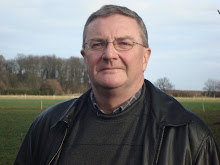
Back in the UK after a fortnight in the Middle East, the highlight of which was a short stay in Syria. We'd gone primarily so I could finally achieve the lifelong ambition of visiting Krak des Chevaliers, the greatest of the Crusader castles (the subject of 'Part 2' in a day or two), but the country as a whole proved to be a real eye-opener on so many levels. The glib but damning designations of the Bush/Blair era - 'rogue state' and so forth - do an injustice to a country that in social and religious terms is remarkably liberal for the region, with mosques and churches of various Christian hues co-existing happily almost side-by-side (just as what are virtually pubs stand just a little way from the souks). The people that we met were uniformly friendly, deeply committed to family life and often possessing decent English - Syria, once part of the French empire, is a classic example of the inexorable decline of French as a global language, with some of the old 'boites postales' surviving alongside Hellenic and Roman ruins as forlorn reminders of lost ages. As for the history and culture...where to begin? The National Museum of Damascus has on display the world's first alphabet, inscribed on a tiny tablet from the coastal city of Ugarit, next to the world's first musical notation. At, say, the British Museum, these would probably have a room to themselves, with spectacular lighting, a vast explanatory display and visitors queueing round the block to see them; yet in Damascus, one almost stumbles upon them in the corner of a room full of other exhibits. There were many other such discoveries in Damascus, in Aleppo and in Palmyra (the subject of 'Part 3').


But some of the most memorable moments were the unscripted ones: the visit to the 'Bagdad Cafe', the idiosyncratic 'service station' on the road from Palmyra to Damascus which resembles a cross between a Bedouin stopover, a lowbrow gift shop and a beer garden (without the beer); and the unscheduled call at our guide's home town of Homs, which enabled us to eat at the splendid Julia Dumna restaurant (on the site of the home of the Syrian wife of the Roman emperor Septimus Severus) before visiting the atmospheric Um al-Zunnar church, aka the Cathedral of the Virgin Mary, one of the oldest churches in the world and the repository of what is claimed to be Mary's belt. Such wonderful hidden treasures seem almost to be around virtually every corner in Syria, and it's tragic that a mixture of politics, an overly-bureaucratic visa system (the latter a consequence of the former - Irish citizens get in more easily) and inadequate marketing prevent their getting the tourist trade from the west that they undoubtedly deserve to have.

Having said all that, it was still a bit disconcerting to pass road signs which placed us no more than an hour and a half's drive from the Iraq border...
(Pictures, from top: the least upright of Damascus's many ramshackle houses; left, the interior of the great Umayyad mosque of Damascus; right, the church of the Virgin Mary at Homs; and a crossroads at which a good sense of direction is arguably essential)














